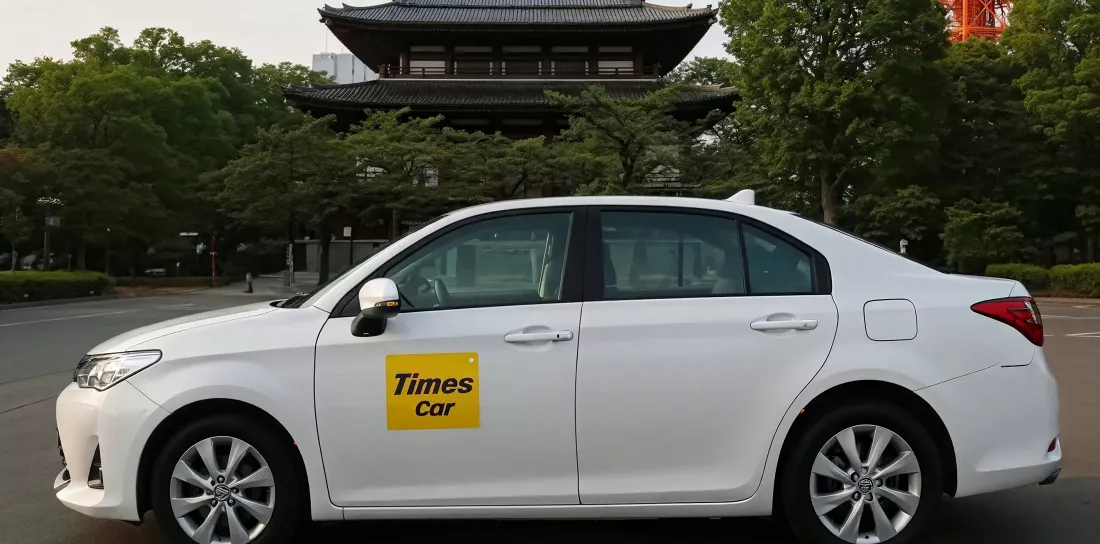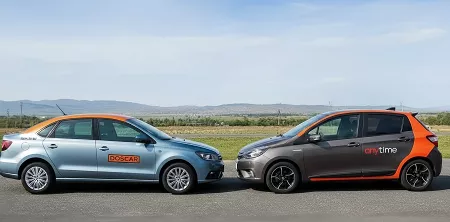
Car Sharing in Japan
Article content
Japan’s car sharing market has long held the #1 position globally in terms of volume. Car sharing in Japan has unique traits shaped by tradition, culture, and urban planning. Most services here follow the station-based model — meaning the A–A system (return the car to the same spot you picked it up from).
A Key Feature: Partnership with Parking Lots. Due to Japan’s dense cities and limited available space, carsharing companies sign agreements with parking lot operators for dedicated carsharing spots.
Another Factor: Aging Population. Japan’s aging population often chooses to stop driving for safety reasons. The government supports them with special programs and even taxi ride incentives. Meanwhile, younger people are increasingly choosing not to own a car — partly due to the high cost of ownership and the efficiency of Japan’s public transport.
Japan’s Car Sharing Market
By 2029, Japan’s car sharing market is projected to reach $792 million, with over 2.7 million users. As of 2023, the market value stood at $725.11 million.
The largest global revenue in 2025 is expected to come from the U.S., with over $3 billion.
Today, Japan has over 65,000 shared vehicles and 30+ car sharing operators. The largest player is TimeCar, with a fleet exceeding 50,000 cars.
Average revenue per user (ARPU) in Japan is $275.17.
Interesting Statistics
As of 2023, Japan’s population is 124.4 million. About 81.8 million people hold a driver’s license — that’s 65.75% of the population.
This means there is 1 shared car for every 1,914 residents or 1 shared car per 1,258 licensed drivers.
For comparison, Germany in 2025 is expected to have over 43,000 shared cars for a population of 83.3 million — that’s 1 car per 1,937 people. About 54 million people in Germany have a driver’s license, but only 28.2 million have one for passenger vehicles. The statistics only account for modern plastic licenses — older paper ones are excluded. Based on total licenses, that’s 1 shared car per 1,256 drivers — almost identical to Japan.
In Ukraine, as of 2021, there were about 350 shared cars for 32 million people — that’s 91,429 people per 1 car.
Who Uses Car Sharing in Japan?
Age distribution of users:
- 18–24 years – 18.75%
- 25–34 years – 23.75%
- 35–44 years – 26.25%
- 45–54 years – 21.25%
- 55–64 years – 10%
Men account for 80% of all car sharing users in Japan, women — just 20%.
Japan’s Taxi Market
Japan’s taxi market shrank by 20% in recent years due to the COVID-19 pandemic. The average age of taxi drivers is 60. In 2024, around 82 taxi companies went bankrupt — due to a driver shortage and rising fuel prices. It was a record year for bankruptcies in the industry — even higher than the previous peak in 2019.

The Future of Car Sharing in Japan
Japan’s car sharing market is expected to continue growing, even as it approaches saturation. Parking remains a major challenge, but Japan is actively investing in autonomous vehicle programs. We may soon see self-driving cars in its largest cities.
Electric Cars in Japan’s Car Sharing
EVs make up less than 2% of Japan’s car sharing fleet. Despite national goals around sustainability, decarbonization in the automotive sector is progressing slowly.
By contrast, over 20% of Germany’s shared car fleet in 2025 is expected to be electric or hybrid. Unfortunately, there’s no clear breakdown for fully electric vehicles in German car sharing.
Car Sharing Operators in Japan
As mentioned, Japan has over 30 car sharing providers (compared to over 287 in Germany and just 4 in Ukraine as of 2025). Some of the better-known operators include:
- Times Car
- Oryx carshare
- Mitsui Carshare
- Honda Everygo
- Cariteko
Similar articles

The Canadian Way of Car Sharing
While Europe’s car-sharing scene is booming, Canada’s market grows quietly and thoughtfully. Discover how Communauto, Modo, and Evo built a model that fits Canada’s cities and why this slower approach actually works

Car Sharing in Kazakhstan
Learn how car sharing is evolving in Kazakhstan — active operators, pricing, fleet details, and future expansion beyond Almaty

Car Rental in Georgia Country
look at the development of the car rental market in Georgia, from early operators to modern rental models. Key players, service changes, and what travelers should pay attention to
